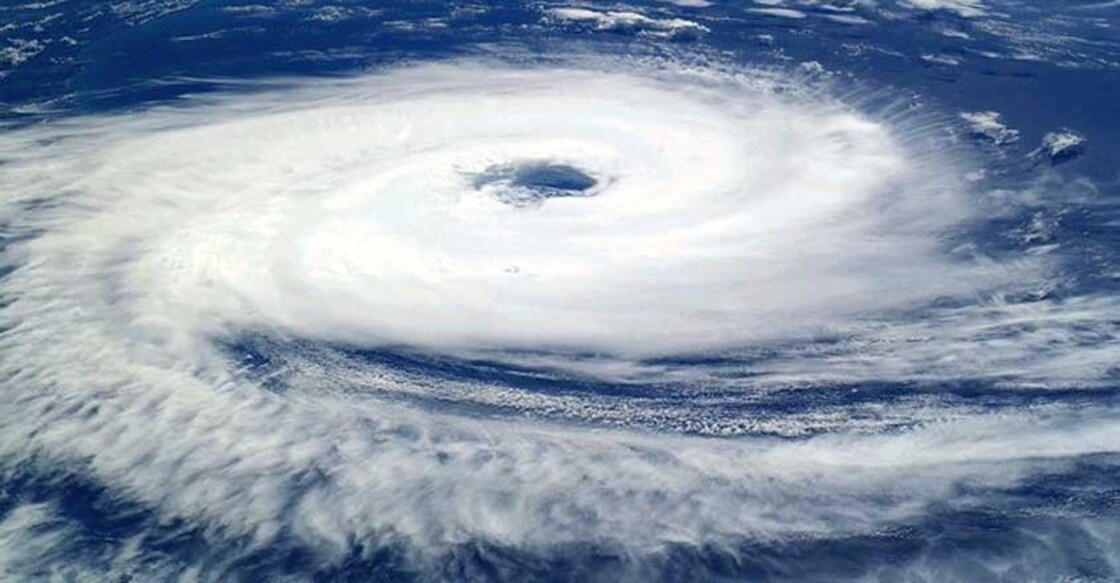Climate change making cyclones fierce, frequent: researchers

Mail This Article
New Delhi: As Cyclone 'Nisarga' is going to wreak havoc in India and that too within a fortnight amid the pandemic scare, climate experts blame unplanned urban development and destruction of mangroves contribute to the climate change, making cyclones more intense with stronger sustained winds and frequent too.
The India Meteorological Department (IMD) on Tuesday said the depression in the Arabian Sea is slated to intensify into a severe cyclonic storm Nisarga and is expected to make landfall just 110 km north of Mumbai on Wednesday.
Scientists have observed an increasing trend of post-monsoon tropical cyclones over the Arabian Sea.
The current events are, however, pointing towards a detectable increase in cyclonic trends in the pre-monsoon season too.
Coming on the heels of the record-breaking storm, Cyclone Amphan, which battered coastal West Bengal, Odisha and Bangladesh on May 20, climate scientists say with a rapidly warming Indian Ocean, these severe cyclones are projected to increase in number on both the east and the west coast of India.
Climate change is increasing the damage that cyclones like Nisarga and Amphan cause in several ways like increasing sea surface temperatures that can make cyclones more powerful, increasing the rainfall intensity during the storm and rising sea levels, which increases the distance inland that storm surges reach.
The strongest cyclones have become more common across the world and scientists project that climate change will continue to make the strongest cyclones more powerful.
The strength of cyclones affecting the countries bordering the North Indian Ocean has been increasing as the planet has warmed, say multiple studies.
Climate change is increasing the danger from cyclones in several ways like cyclones are fueled by available heat.
Warming seas can make cyclones more powerful by increasing the potential energy available to them, effectively increasing their power ceiling or speed limit.
Higher sea-surface temperatures mean that cyclone wind speeds can increase.
Globally, ocean temperatures have increased as a result of climate change and there has been a global increase in the observed intensity of the strongest storms over recent decades.
Explaining the phenomenon, Roxy Mathew Koll, Scientist with the Indian Institute of Tropical Meteorology and Lead Author of the IPCC Oceans and Cryosphere, in the case of both the recent cyclones -- Amphan and now Nisarga -- the anomalously warm ocean temperatures are proving to give them a major boost.
While temperatures in the Bay of Bengal were between 30-33 degrees Celsius prior to Amphan, surface temperatures over the Arabian Sea recorded 30-32 degrees prior to the depression which is now evolving as cyclone Nisarga.
Such high temperatures aid rapid intensification of these cyclonic systems, which many weather models fail to capture, he said.
"We already see a detectable increase in post-monsoon tropical cyclones over the Arabian Sea. Are we moving towards such a trend during the pre-monsoon also? During the recent years we have seen a surge in Arabian Sea cyclones occurring close to the monsoon onset but we are yet to understand if there is a climate change element to it.
"Regardless, the IPCC reports indicate an increase in Arabian Sea cyclones during the pre and post-monsoon seasons as a response to the rapid ocean warming trends."
Quoting UN body IPCC (Intergovernmental Panel on Climate Change) report, Anjal Prakash, Research Director and Adjunct Associate Professor with the Bharti Institute of Public Policy of the Indian School of Business in Hyderabad, said these cyclones are due to ocean heat waves and warming up of oceans.
"The recent IPCC's special report on Ocean and Cryosphere in a changing climate made very important revelations about the changing characteristics of the sea. The impact of the warming of the ocean means that there would be an increase in the incidences of tropical cyclone winds and rainfall, and increases in extreme waves, combined with relative sea level rise, exacerbate extreme sea level events and coastal hazards."
One of the most affected cities, as per the reports, is Mumbai, Prakash added.
As climate change triggered tropical cyclones are on the rise in coastal India, the unplanned development adds to the vulnerability of these cities.
The devastation in West Bengal in the wake of cyclone Amphan cost $13 billion in damage. As Nisarga is expected to hit the western coast, Mumbai is under severe threat.
Multiple studies claim that India's largest coastal cities, like Mumbai and Kolkata, are facing the severest threats from climate-induced flooding.
Planned and unplanned development in most ecologically sensitive zones in these cities fail to address the risks of climate change related flooding.
Experts say Mumbai has observed an unprecedented growth in the last few decades, methodically constructing on its mangrove forests.
Mangroves are swamp forests which provide many ecosystem services to coastal communities.
The density of the trees, together with the variety of tree species, attenuate the inflow of water and create a sort of buffer zone against floods and storm surges.

